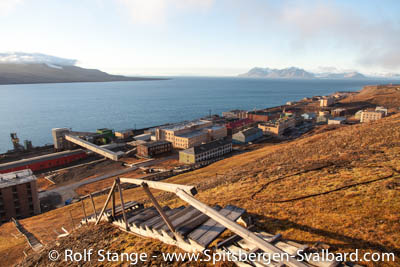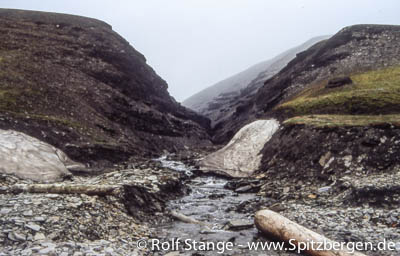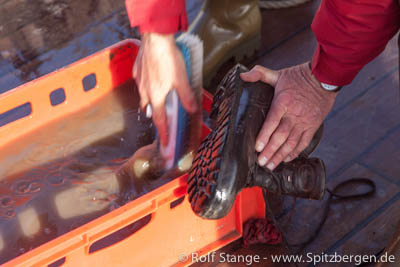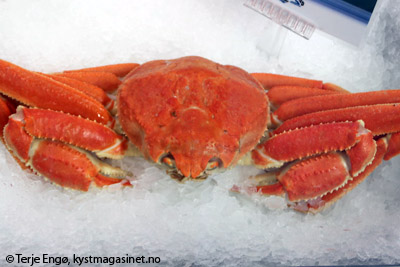-
current
recommendations- Liefdefjord
New page dedicated to one of Spitsbergen's most beautiful fjords. Background information and many photos.
- New Spitsbergen guidebook
The new edition of my Spitsbergen guidebook is out and available now!
- Liefdefjord
New page dedicated to one of Spitsbergen's most beautiful fjords. Background information and many photos.
Page Structure
-
Spitsbergen-News
- Select Month
- June 2025
- May 2025
- April 2025
- March 2025
- February 2025
- January 2025
- December 2024
- November 2024
- October 2024
- September 2024
- August 2024
- July 2024
- June 2024
- May 2024
- April 2024
- March 2024
- February 2024
- January 2024
- December 2023
- November 2023
- October 2023
- September 2023
- August 2023
- July 2023
- June 2023
- May 2023
- April 2023
- March 2023
- February 2023
- January 2023
- December 2022
- November 2022
- October 2022
- September 2022
- August 2022
- July 2022
- June 2022
- May 2022
- April 2022
- March 2022
- February 2022
- January 2022
- December 2021
- November 2021
- October 2021
- September 2021
- August 2021
- July 2021
- June 2021
- May 2021
- April 2021
- March 2021
- February 2021
- January 2021
- December 2020
- November 2020
- October 2020
- September 2020
- August 2020
- July 2020
- June 2020
- May 2020
- April 2020
- March 2020
- February 2020
- January 2020
- December 2019
- November 2019
- October 2019
- September 2019
- August 2019
- July 2019
- June 2019
- May 2019
- April 2019
- March 2019
- February 2019
- January 2019
- December 2018
- November 2018
- October 2018
- September 2018
- August 2018
- July 2018
- June 2018
- May 2018
- April 2018
- March 2018
- February 2018
- January 2018
- December 2017
- November 2017
- October 2017
- September 2017
- August 2017
- July 2017
- June 2017
- May 2017
- April 2017
- March 2017
- February 2017
- January 2017
- December 2016
- November 2016
- October 2016
- September 2016
- August 2016
- July 2016
- June 2016
- May 2016
- April 2016
- March 2016
- February 2016
- January 2016
- December 2015
- November 2015
- October 2015
- September 2015
- August 2015
- July 2015
- June 2015
- May 2015
- April 2015
- March 2015
- February 2015
- January 2015
- December 2014
- November 2014
- October 2014
- September 2014
- August 2014
- July 2014
- June 2014
- May 2014
- April 2014
- March 2014
- February 2014
- January 2014
- December 2013
- November 2013
- October 2013
- September 2013
- August 2013
- July 2013
- June 2013
- May 2013
- April 2013
- March 2013
- February 2013
- January 2013
- December 2012
- November 2012
- October 2012
- September 2012
- August 2012
- July 2012
- June 2012
- May 2012
- April 2012
- March 2012
- February 2012
- January 2012
- December 2011
- November 2011
- October 2011
- September 2011
- August 2011
- May 2011
- April 2011
- March 2011
- February 2011
- January 2011
- December 2010
- November 2010
- September 2010
- August 2010
- July 2010
- June 2010
- May 2010
- April 2010
- March 2010
- February 2010
- November 2009
- October 2009
- August 2009
- July 2009
- June 2009
- May 2009
- April 2009
- March 2009
- February 2009
- January 2009
- December 2008
- November 2008
- October 2008
- August 2008
- July 2008
- June 2008
- May 2008
- April 2008
- March 2008
- February 2008
- April 2000
- Select Month
-
weather information
-
Newsletter

| Guidebook: Spitsbergen-Svalbard |
Home
→ January, 2014
Monthly Archives: January 2014 − News & Stories
Svalbard environmental protection act updated
The Svalbard environmental protection act (Svalbardmiljøloven) regulates what can and what can’t be done in Spitsbergen’s nature. It is updated more or less regularly to meet the latest needs. The latest update came into force with the arrival of 2014. There are no major changes relevant for most visitors/tourists.
Changes include:
• Longyearbyen’s council area has been enlarged to include Adventfjord completely. This means that this area is now administrated locally by the elected municipal administration of Longyearbyen and not centrally from Oslo through the appointed Sysselmannen (governor), as all other areas of Spitsbergen which are not part of any council area of the settlements.
• Minor adjustments have been made in the regulations for hunting. So far, young hunters had to be at least 16 years old. Now, it is enough to celebrate one’s 16th birthday in the calendar year in question. This will certainly be very popular in Longyearbyen, where children are introduced to hunting already in the Kindergarten.
• The use of marine hovercraft, already forbidden on land and frozen lakes and rivers, is now also banned from the sea within one mile off shore. The use of such crafts has been matter of controversial debate in Spitsbergen recently. They have been used for research, including expeditions far out into the Arctic Ocean, and locally in Sveagruva for Search and Rescue (SAR) preparedness. Large wet areas near Sveagruva are neither accessible by boat nor by land vehicle, but SAR forces need to be able to reach these areas in case of accidents. There is a small airstrip in Sveagruva. The use of hovercraft remains possible in case of emergencies, but currently not for the purpose of practice. It is not unlikely that SAR forces in Sveagruva will get some more freedom here to enable them to practice with hovercraft. Commercial use of hovercrafts, for example within filming our tourism, has not been an issue so far and is not an option anymore from now on.
• The so-called administration area 10, where visitors can move around without notifying the Sysselmannen in advance, has been enlarge around Ny Ålesund, giving people there more freedom to move around also privately. Most scientists in Ny Ålesund don’t stay long enough to get legal status as residents, so they are as restricted as any other tourist for their private trips. The area they can access without notifying the Sysselmannen now also includes the famous mountains Tre Kroner and a larger part of Forlandsund.
Adventfjord seen from Sukkertoppen near Longyearbyen. This area is now under local administration.
Source: Norwegisches Klima und Umweltministerium, Pressemitteilung
Barentsburg: coal mine re-opens after accidents in 2013
Coal production can now start to continue in the Russian mine in Barentsburg. In 2013, workers were killed or injured in a series of 3 serious accidents, after which Norwegian authorities fined the Russian mining company with NOK 1.3 million (about Euro 155,000) and closed the mine temporarily. In April 2013, one miner was killed in a block fall. In June, one was killed by falling stones and in September, one lost a leg after another accident. The mine was subsequently closed due to the generally low safety level.
Since then, the Trust has followed Norwegian advice to increase the safety in the mine. Now, the Norwegians have got the impression that the situation is improving and have given permission to re-open the mine.
Coal production was already stopped in Barentsburg in 2008 after a fire in the mine fore more than 2 years.
Barentsburg: coal mine permitted to re-open after accidents in 2013.
Source: Barentsobserver
Hopen: discoverer Marmaduke finally on the map
The little island Hopen in southeastern Svalbard was, as far as known, discovered in 1613 by the English whaler Thomas Marmaduke. The island was subsequently named after his ship, the Hopewell, but the name of the discoverer did not make it on the map.
This scandal has caught the attention of the crew of the Norwegian weather on Hopen, who decided, in the year of the 400th anniversary of the discovery, to file a request to the Norwegian Polar Institute (NPI) to get something done about it. It was the station cook who sent the application, and an appropriate, as so far nameless, topographic feature was duly found: a little gully on the west side of the island, just a few hundred metres from the station. The name giving committee of the NPI agreed, and the gully in question bears now officially the name Marmadukeskaret (Marmaduke gully).
The name giving committee meets twice every year to decide officially about new place names which then appear on the topographic map. Basically, everybody can file suggestions. Names of living persons have, however, hardly any chance to be accepted.
Gully on the island Hopen. Not the one now named after Marmaduke, but that one is quite similar. A bit smaller.
Source: Hopenmeteo
Arctic aliens: mitigating invasive species
The introduction of new species to isolated ecosystems with a low species diversity is always problematic and often catastrophic, as anyone know who is following the development on sub-antarctic islands such as South Georgia. In the Arctic, the problem is at least a bit less dramatic than on sub-antarctic islands. There are several reasons: flora and fauna are already to some degree adapted to plant-eating animals and predators, respectively. Secondly, the natural introduction of new species by winds and currents is much more common in the Arctic, which is a main reason why it has much more animal and plant species than remote islands in the deep south, where latitudinal winds and currents isolate them rather than connecting them to warmer areas.
But the problem of invasive species is nevertheless to be taken very seriously also in the high north. There is already a number of alien species in Spitsbergen, which has a long history of exploration, mining etc., during which plants and animals were imported with building materials, animal feed and other cargo. Species that might be especially problematic for the natural diversity of species include cow parsley (Anthriscus sylvestris), which is thriving in Barentsburg, and the southern vole (Microtus levis). The fact that the southern vole lives happily in places like Grumantbyen and Colesbukta, which have been abandoned as mining settlements half a century ago, indicates that not much may be needed in terms of adaptation or climate warming to make it spread over large areas so far unaffected.
Now the local administration (Sysselmannen) has decided to do something about it. This has taken surprisingly long, considering what can be learnt from efforts to remove invasive species from sub-antarctic islands.
The need to prevent new invasive species from coming to Spitsbergen is evident. Cargo and ballast water of ships will need attention to achieve this. Also, studies have shown that a surprising amount of seeds and organic material comes attached to boots of flight passengers arriving Longyearbyen. As a consequence, the governor will request future visitors to make sure they do not transport unwanted organic materials by accident. This is already common practice in Antarctica.
Attempts should also be made to remove invasive species that are already there. If this is not possible, then their further dispersal should be controlled.
To start this process, the Sysselmannen has now published a report to describe the problem and to identify appropriate measures.
Simple, but effective: clean your boots!
Source: Sysselmannen
Arctic invadors: the Snow Crab in the Barents Sea
The introduction of new species to ecosystems, be it by natural migration, with human influence or helped by climate change, is hardly ever good news for any region affected. Too often, locally established species suffer severely from their new neighbours. This is especially the case for relatively isolated ecosystems, for example in polar areas or on remote islands.
There is a new species now established in the Barents Sea: the Snow Crab (Chionoecetes opilio), which can be up to 90 cm large (including the legs) and 2 kg heavy. She was wide-spread also in the past, with an occurrence in the Bering Strait and further north as well as at the coasts of Newfoundland. It is likely that it has migrated along the coast of Siberia westwards into the Barents Sea. Initially, it was found east of the Barents Sea, near Novaya Zemlya, but it has been reported east of Spitsbergen since.
Experience in a similar case, with King Crabs at the coast of North Norway, has shown that the marine bottom fauna is strongly depleted by their new hungry neighbours. It is likely that the Snow Crab has a similarly healthy appetite as its relative, the King Crab. Additionally, it may just be a question of time until the King Crab itself migrates further north to inhabit the northern Barents Sea and Svalbard waters.
The Snow Crab has been found east of Spitsbergen since the mid 1990s and is now about to become a precious target species for the fishing industry.
Immigrants to the Barents Sea: Snow Crab (foto © Terje Engø).
Source: Kystmagasinet
News-Listing live generated at 2025/June/15 at 05:59:00 Uhr (GMT+1)

































